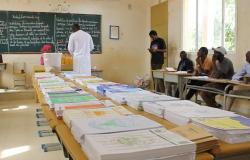There is life in abandoned mines in Quebec and it could be beneficial to the environment. This is what two researchers from UQAM are observing, who are studying microbial communities feeding on toxic substances in aquifers, geological formations containing underground fresh water.
Posted at 2:00 p.m.
Last September, hydrochemist Violaine Ponsin and microbiologist Cassandre Lazar received nearly $760,000 from the Canada Foundation for Innovation, the government of Quebec and other partners for their project.
The two researchers and their three graduate students hope to “understand the processes responsible for the biotic and abiotic transformations of contaminants in aquifers”.
The money received helps pay doctoral and master’s students “who sometimes work until the early hours of the morning or on weekends”, but also to do sequencing in the laboratory, to maintain the equipment and to pay travel and analyses.
Thanks to a team of divers, the researchers first collected samples of life in the old Forsyth mine and are now working in the old Blackburn mica mine, both located in Outaouais.
When mines are abandoned, “they stop pumping groundwater, so it comes to the surface,” explains Cassandre Lazar, associate professor in the biological sciences department at UQAM.
“Very quickly, there is no more oxygen: in the first meters of depth, it disappears completely,” notes Violaine Ponsin, professor in the department of Earth and atmospheric sciences at UQAM. , who is conducting compound specific isotope analyzes (CSIA) in this project.
Then, going down, the quantities of methane increase drastically. The entire food chain of the aquifer is based on this presence, since the microorganisms feed on it.
The other major interest of the research: knowing if depth influences the composition of microbial communities. So far, the answer is yes: there are fewer of them with depth.
External applications
“We discovered new species of bacteria, which are currently unknown in the databases. They live in such a unique habitat that it allows the evolution of species capable of transforming the forms of metallic trace elements into less toxic metals,” illustrates M.me Lazar.
The micro-organism is not doing this to help humans. What interests him is the source of energy, of carbon. But by transforming the substance to its advantage, it generates a positive consequence for us.
Cassandre Lazar, associate professor in the department of biological sciences at UQAM
In the mine crater, we also find daphnia, a zooplankton visible to the naked eye measuring 1 to 4 mm which “bioaccumulates everything that is toxic in its tissues”. Normally transparent, the daphnids at the Blackburn site are red due to great stress, but they are resistant to extremely high toxic concentrations.
Although this was not the main objective, the researchers see it as a process that can be outsourced and applied. The method, called bioremediation, is used to clean up oil spills by “eating” the oil in the water. Degradation by micro-organisms can also be useful as a “pollution management measure”, particularly under gas station tanks, adds M.me Ponsin.
Strains of bacteria are currently isolated in the cold in the laboratory. They will soon be studied in culture at different levels of heavy metals.
“In an ideal world, with the right funding, I would say that in six months, we could characterize all the strains and propose a cocktail to clean up environments that would have the same conditions,” estimates Cassandre Lazar.






